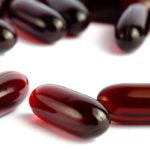Fitness Gloves: Your Ultimate Workout Companion
Choosing the right fitness gloves can significantly enhance your workout experience, providing comfort, protection, and improved grip. This comprehensive guide explores the diverse world of fitness gloves, helping you navigate the options and find the perfect pair to suit your needs and fitness goals.
Understanding the Benefits:
Fitness gloves offer a multitude of benefits that extend beyond simple comfort. Their primary function is to improve grip, crucial for activities like weightlifting, calisthenics, and CrossFit. This enhanced grip prevents slippage, allowing you to lift heavier weights with greater confidence and control, minimizing the risk of dropped weights and potential injuries. Moreover, gloves act as a barrier between your hands and the equipment, reducing friction and the subsequent formation of calluses and blisters. This is particularly important for those new to weight training or those undertaking high-repetition exercises.
Beyond grip and protection, many fitness gloves incorporate features designed to enhance comfort and support. Padding in strategic areas absorbs shock and reduces strain on your wrists and joints, promoting better posture and minimizing the risk of repetitive strain injuries (RSIs). The breathable materials used in many gloves keep your hands cool and dry, preventing sweat build-up and discomfort during intense workouts.
Types of Fitness Gloves:
The fitness glove market offers a wide array of options, each designed to cater to specific needs and preferences. Understanding the different types is vital in selecting the ideal pair:
-
Weightlifting Gloves: These gloves prioritize wrist support and padded palms. They are typically thicker and more robust than other types, designed to withstand the demands of heavy lifting. Features often include reinforced stitching, durable materials, and adjustable wrist straps for a secure fit. Look for gloves with ample padding in the palm area to cushion impact and reduce strain on the hands and wrists during heavy lifts like deadlifts, squats, and bench presses.
-
CrossFit Gloves: Designed for high-intensity, multi-faceted workouts, CrossFit gloves prioritize versatility and durability. They often incorporate breathable materials, reinforced stitching, and strategically placed padding to protect against abrasion and impact during various exercises, including pull-ups, rope climbs, and barbell work. The breathability is paramount due to the intense nature of CrossFit workouts.
-
Gymnastics Gloves: These gloves offer a balance between grip and dexterity. They tend to be thinner and more flexible than weightlifting gloves, allowing for greater freedom of movement and precision during gymnastic exercises. Grippy palms ensure a strong grip on the bars and rings, while minimizing the risk of calluses. Consider the material; leather provides superior durability, while synthetic materials offer better breathability.
-
Cycling Gloves: While not strictly fitness gloves, cycling gloves offer similar hand protection features. They typically incorporate gel padding to absorb vibrations and reduce hand fatigue during prolonged cycling sessions. They often feature reinforced palms for improved grip on handlebars and breathable backs to regulate hand temperature. The primary focus is shock absorption and comfort over maximum grip strength.
-
Full Finger vs. Half Finger: This distinction affects dexterity and protection. Full-finger gloves offer superior protection against blisters and calluses, especially for beginners. However, half-finger gloves allow for greater flexibility and dexterity, which is preferred by those who require more precise hand movements during their workouts.
Material Considerations:
The material composition of your fitness gloves significantly influences their performance, durability, and breathability:
-
Leather: Leather gloves are known for their exceptional durability and grip. They offer superior protection against abrasion and tearing, making them a popular choice for weightlifting and CrossFit. However, leather gloves tend to be less breathable than synthetic alternatives.
-
Synthetic Leather (PU Leather): This cost-effective alternative to genuine leather provides similar durability and grip at a lower price point. Synthetic leather is often more breathable than genuine leather, improving comfort during strenuous activities.
-
Neoprene: Neoprene is a flexible, synthetic rubber known for its shock-absorbing properties. It’s often incorporated into weightlifting gloves to provide additional wrist support and impact protection.
-
Nylon and Spandex: These materials are commonly used in combination to create breathable and lightweight gloves, ideal for high-intensity workouts where breathability is crucial. The combination provides a comfortable fit and excellent flexibility.
Choosing the Right Size and Fit:
Proper fit is crucial for maximizing the benefits and comfort of your fitness gloves. Gloves that are too tight can restrict blood flow and cause discomfort, while gloves that are too loose will provide inadequate support and grip. Most manufacturers provide sizing charts to help you find the perfect fit. Measure your hand circumference and refer to the chart before making a purchase. Consider trying on different sizes if possible to ensure a comfortable and secure fit.
Maintenance and Care:
Proper care extends the life of your fitness gloves and maintains their performance. Always clean your gloves after each use to remove sweat and dirt. Air-drying is recommended to prevent damage from excessive heat. Avoid using harsh chemicals or machine washing, as this can damage the materials and reduce their lifespan. Regularly inspect your gloves for wear and tear, and replace them when necessary.
Features to Consider:
Beyond the basic functionalities, certain features can enhance your workout experience:
-
Wrist Straps: Adjustable wrist straps provide added support and stability, reducing the risk of wrist injuries.
-
Padding: Strategic padding in the palm and wrist areas absorbs impact and reduces strain.
-
Breathability: Breathable materials keep your hands cool and dry, preventing sweat build-up.
-
Grip Enhancements: Some gloves incorporate specialized grip materials, further enhancing your grip on the equipment.
-
Touchscreen Compatibility: For those who use fitness trackers or smartphones during their workouts, touchscreen-compatible gloves allow for convenient operation without removing the gloves.
By carefully considering the various types, materials, sizes, and features, you can choose the perfect fitness gloves to elevate your workouts and enhance your overall fitness journey. Remember to prioritize comfort, support, and protection when making your selection, ensuring your gloves become a valued addition to your fitness arsenal.





